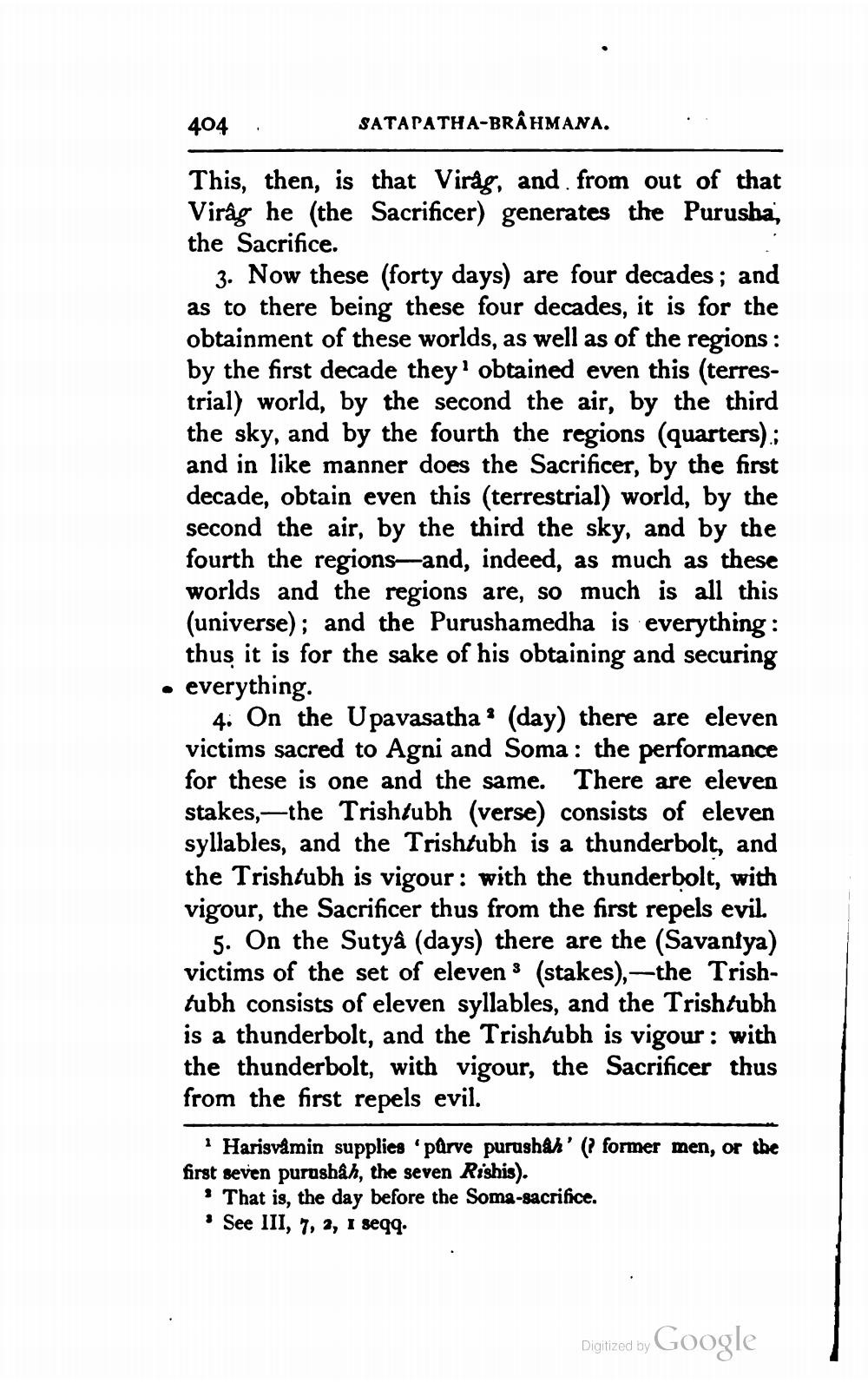________________
404
SATAPATHA-BRAHMANA.
This, then, is that Virág, and from out of that Virag he (the Sacrificer) generates the Purusha, the Sacrifice.
3. Now these (forty days) are four decades; and as to there being these four decades, it is for the obtainment of these worlds, as well as of the regions: by the first decade they' obtained even this (terrestrial) world, by the second the air, by the third the sky, and by the fourth the regions (quarters); and in like manner does the Sacrificer, by the first decade, obtain even this (terrestrial) world, by the second the air, by the third the sky, and by the fourth the regions—and, indeed, as much as these worlds and the regions are, so much is all this (universe); and the Purushamedha is everything: thus it is for the sake of his obtaining and securing everything.
4. On the Upavasatha (day) there are eleven victims sacred to Agni and Soma: the performance for these is one and the same. There are eleven stakes, the Trishtubh (verse) consists of eleven syllables, and the Trishtubh is a thunderbolt, and the Trishtubh is vigour: with the thunderbolt, with vigour, the Sacrificer thus from the first repels evil.
3
5. On the Sutyâ (days) there are the (Savantya) victims of the set of eleven (stakes), the Trishtubh consists of eleven syllables, and the Trish/ubh is a thunderbolt, and the Trishtubh is vigour: with the thunderbolt, with vigour, the Sacrificer thus from the first repels evil.
2
Harisvåmin supplies 'pârve purushâh' (? former men, or the first seven purushâh, the seven Rishis).
That is, the day before the Soma-sacrifice. See III, 7, 2, I seqq.
Digitized by
Google




